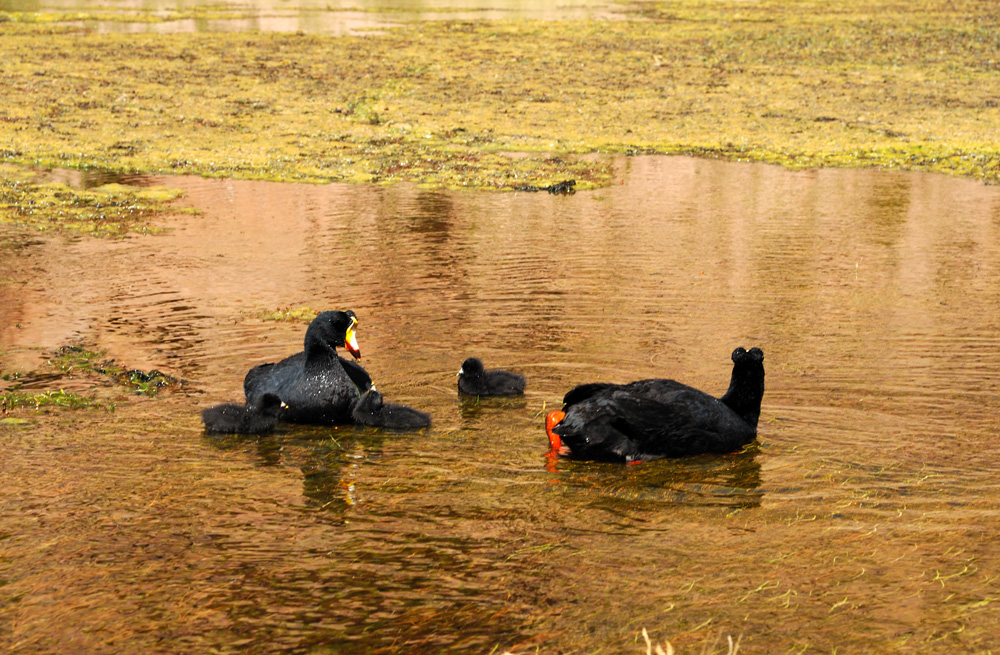
Atacama. Cerro Toco
Atacama. Vado Putana
Atacama. Geyser Valley El Tatio
Atacama. San Pedro and Laguna Cejar
There is a family Rallidae. They are intermediate size bird of order Gruiformes. They live usually in wet places, have feet with very long toes, and touchingly care about their chicks.
The family is huge, among other it includes the genus Porphyrio aka Swamphen (here I have shown two species of New Zealand swamphens) and genus Coot aka Fulica. The last one includes 11 species.
My presentation of Dutch family of Eurasian (Common, Australian) coot aka Fulica atra you can find here.
Eight of eleven genera of coots live in South America. With one of them, Horned coot aka Fulica cornuta, we met in Atacama, on Vado Putana.
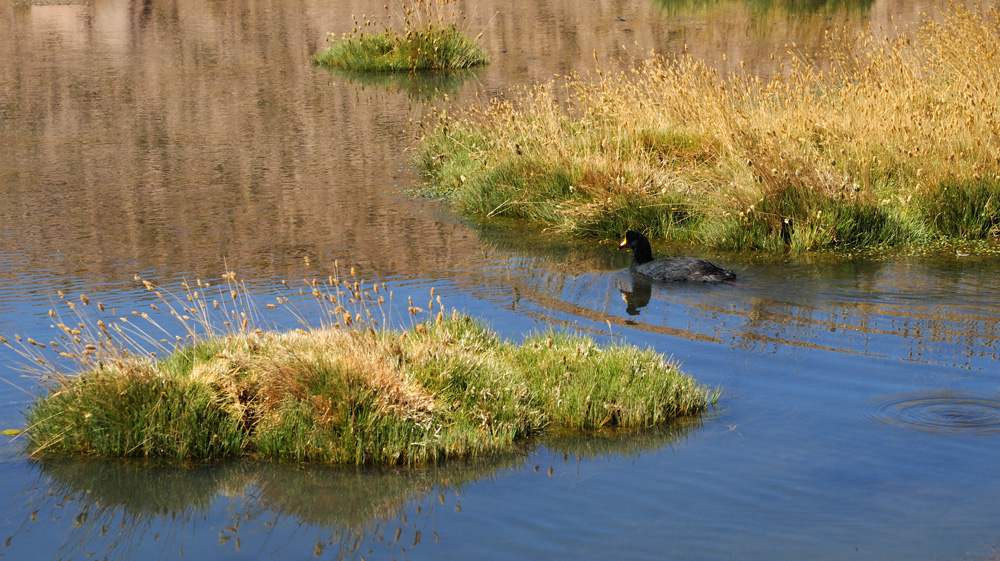
It is a relatively rare species (about 20 000 birds) because of very small areal of habitat. Hornet coots live only in the south corner of Altiplano (north-east of Chile, north-west of Argentina, and south-west of Bolivia) on the altitude from 3000 to 5200 metres. There are only about 600 birds in Chile.
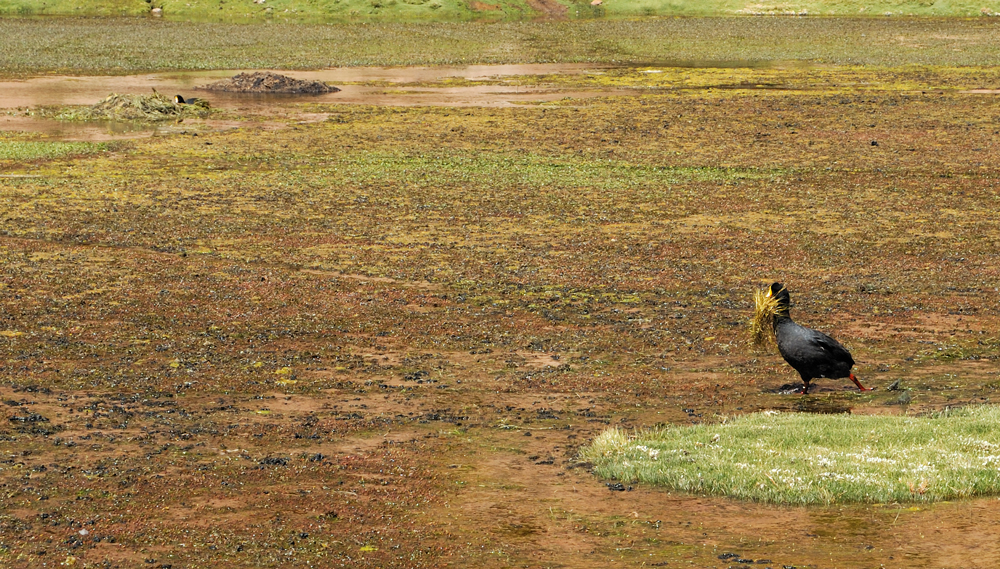
Horned coots are builders, and they build islands. Because the nest should locate on the island, and the island for the nest should be perfect. The only way to find the perfect island is to build it. So, they build islands from pebbles. About five meters in the base and more than one meter high. Every year they improve their islands. Old islands wight about 1.5 tons. And they do it only by their own naked bills. On the top, they put some grass as a nest.
Happy dad carries some grass to the nest.
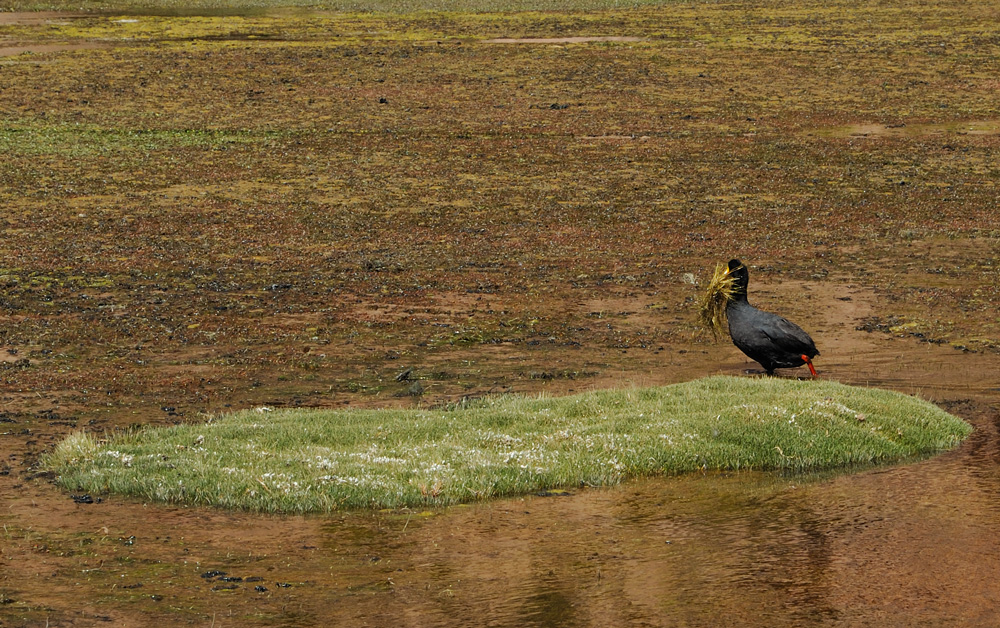
His wife improves the island.
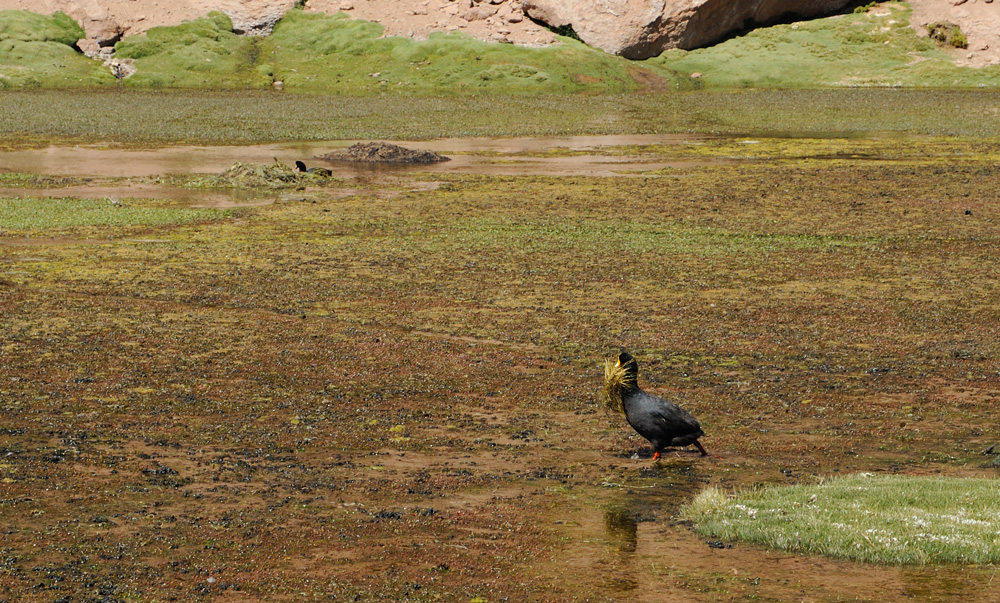
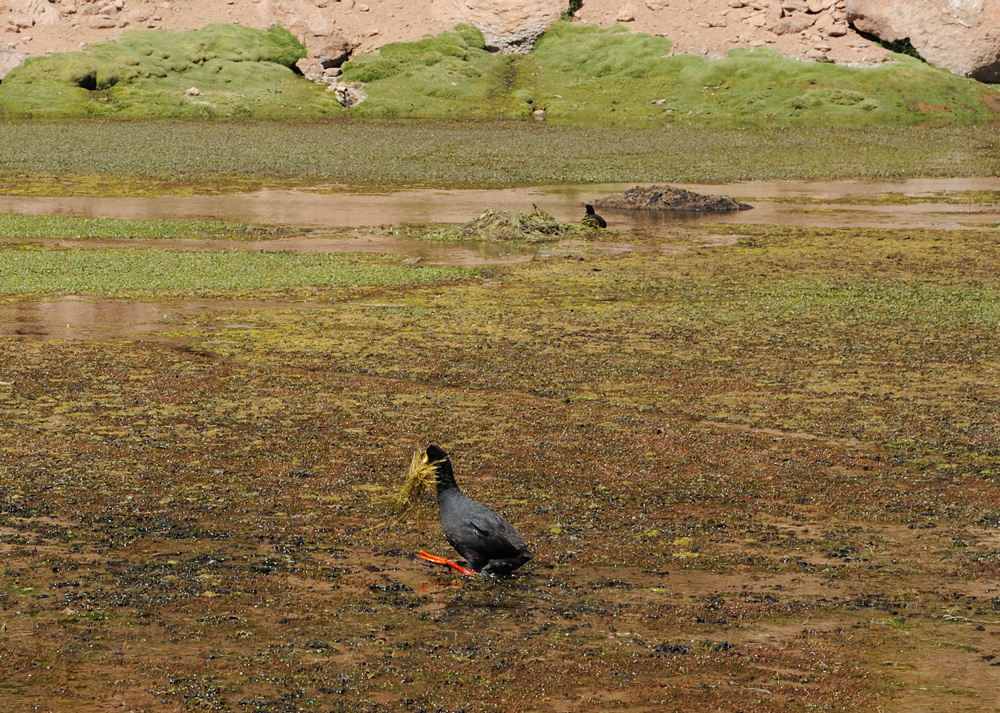
Bring
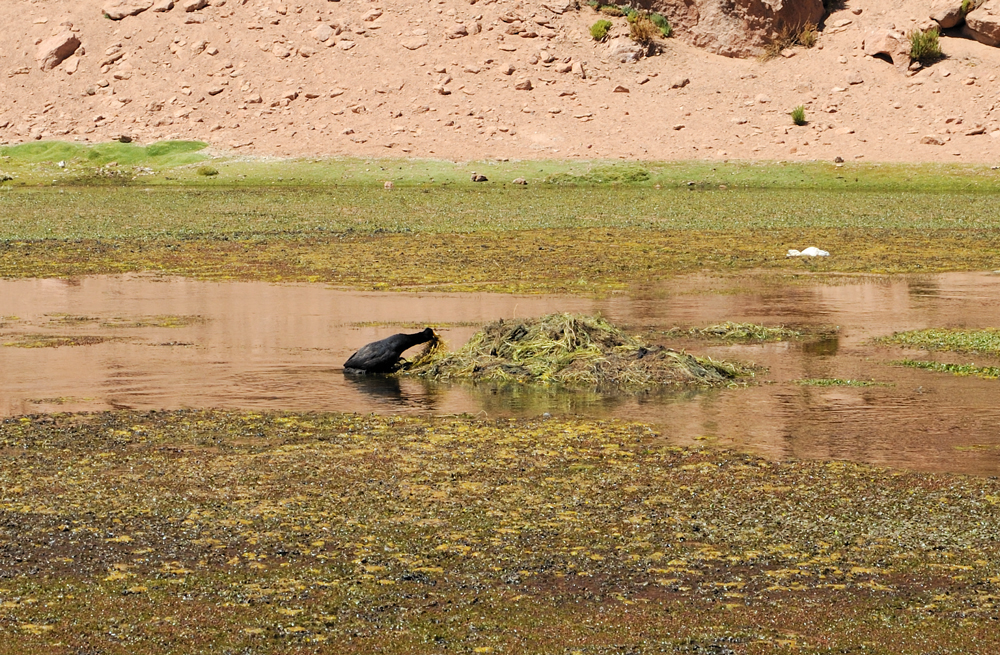
Happy
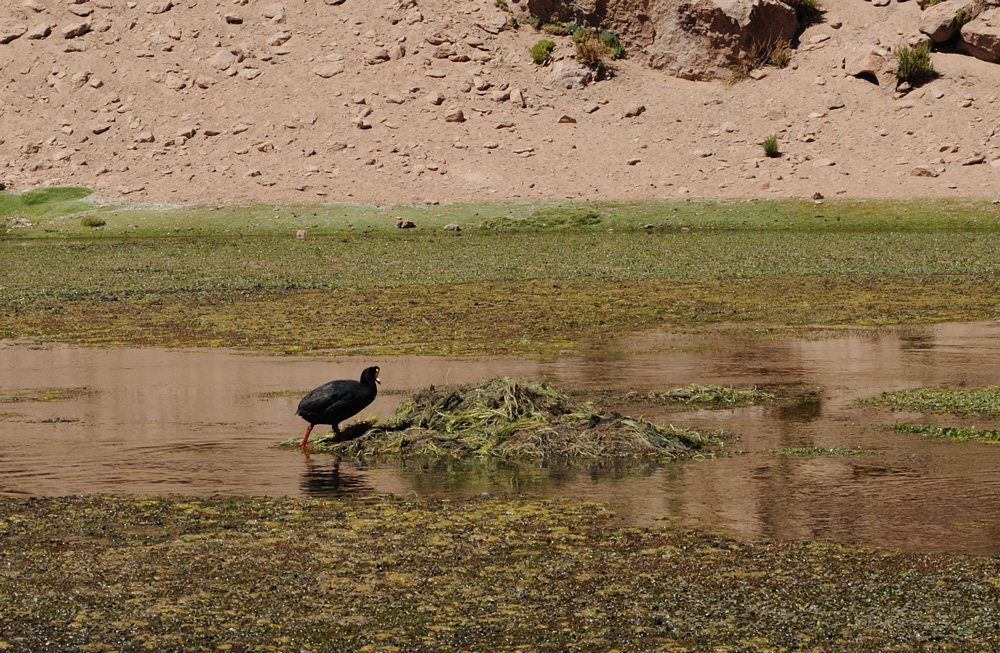
Breeding season is from November to January (south hemisphere). We visited them in the second half of December, and some coot still made nests, but others were already with chicks.
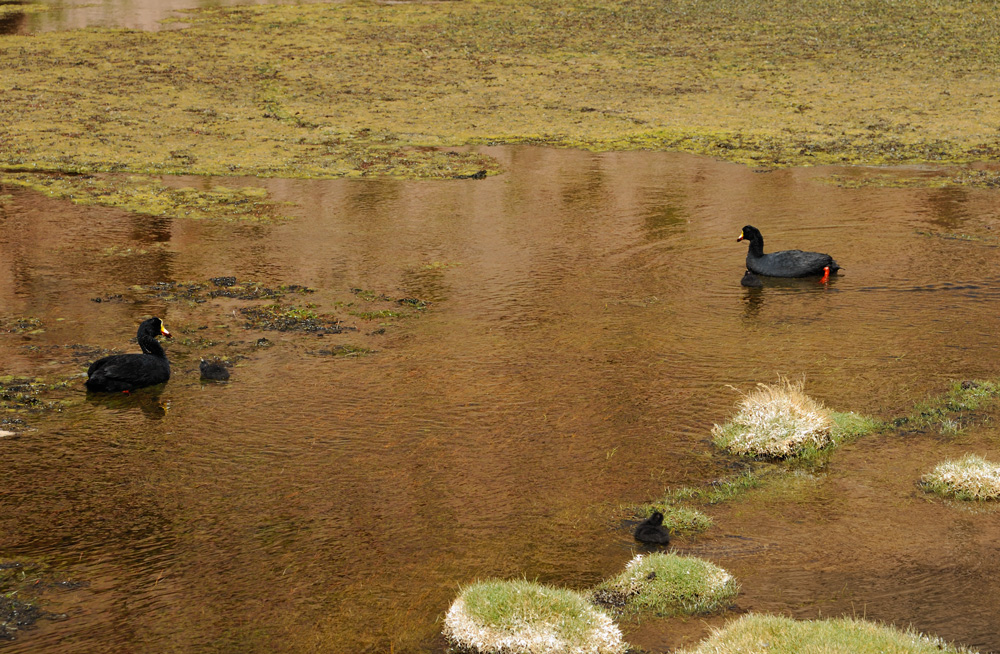
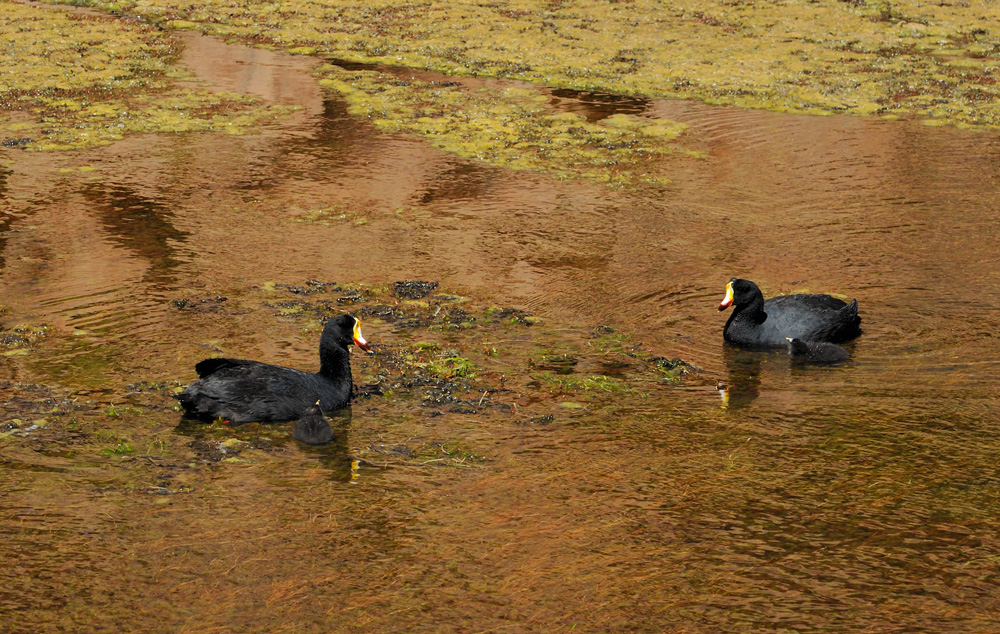
They are very caring parents.
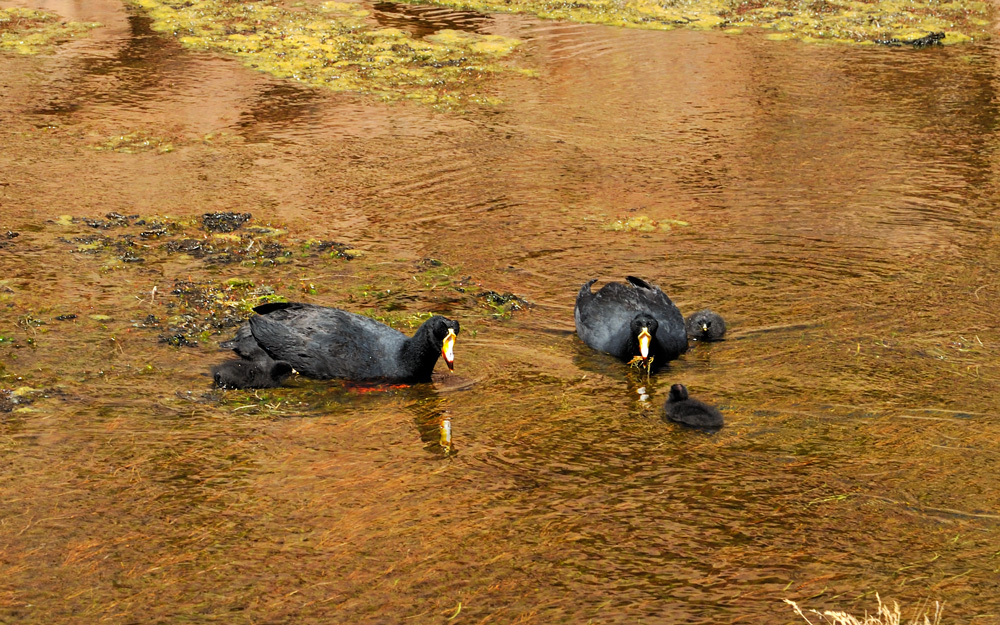
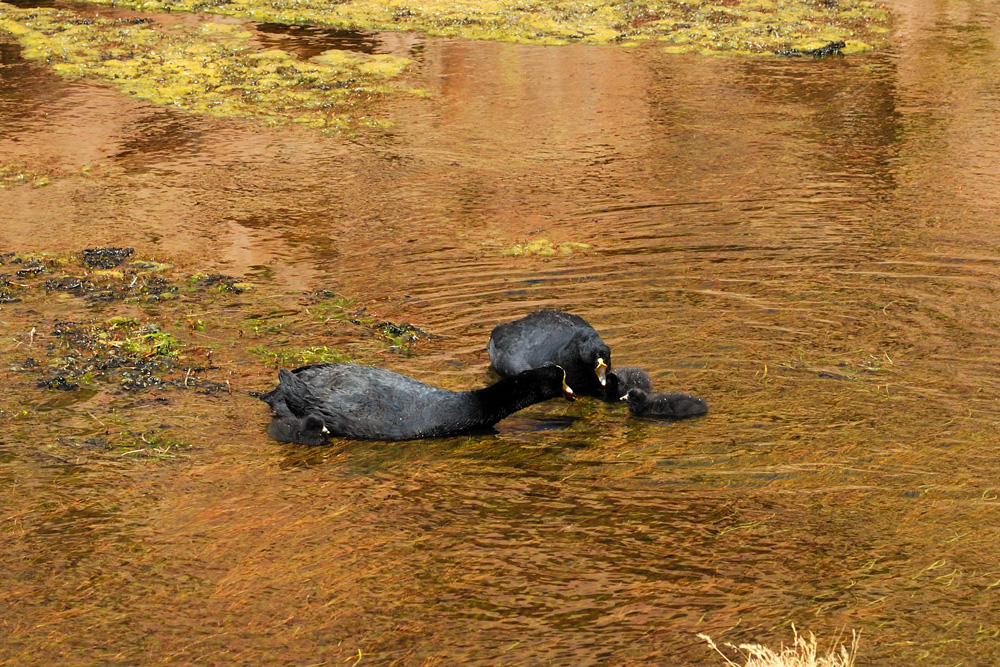
They eat plants and small creatures that live in plants.
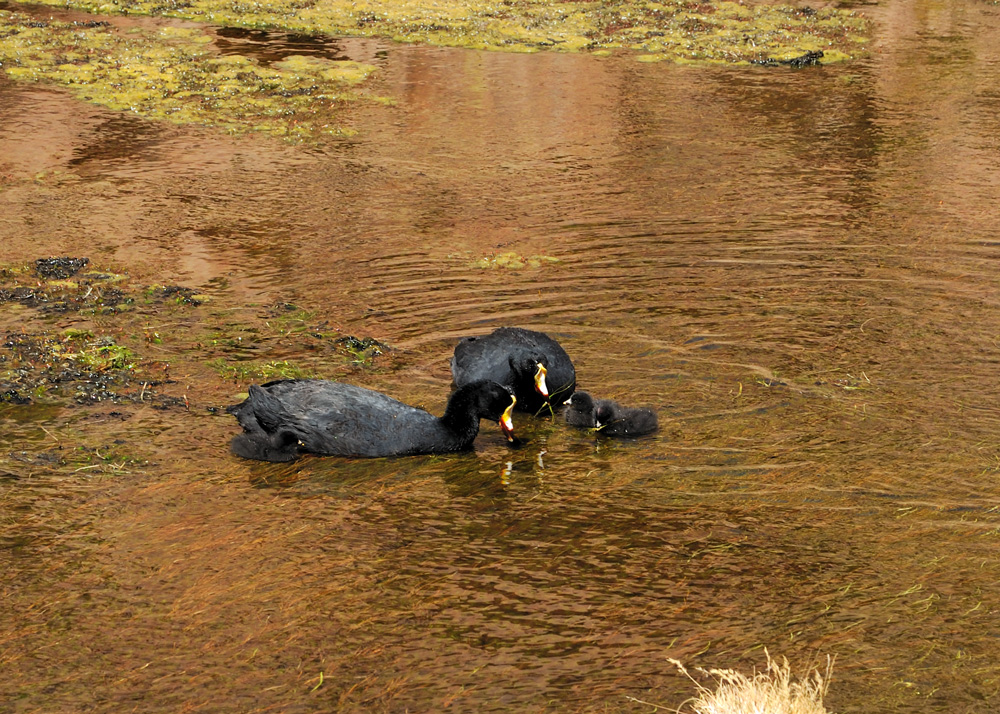
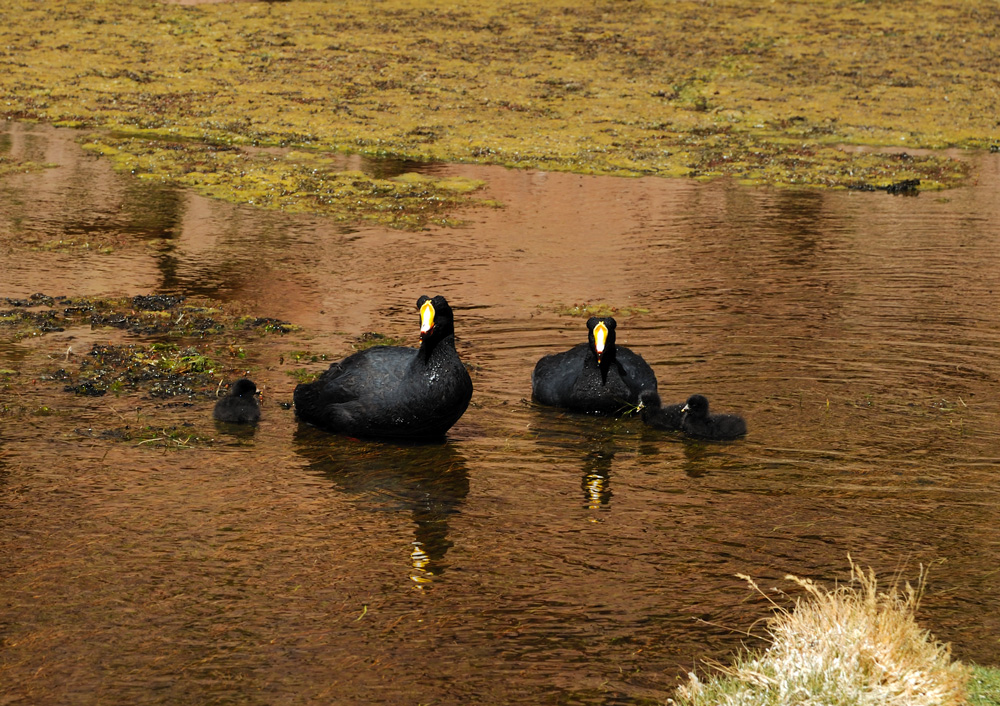
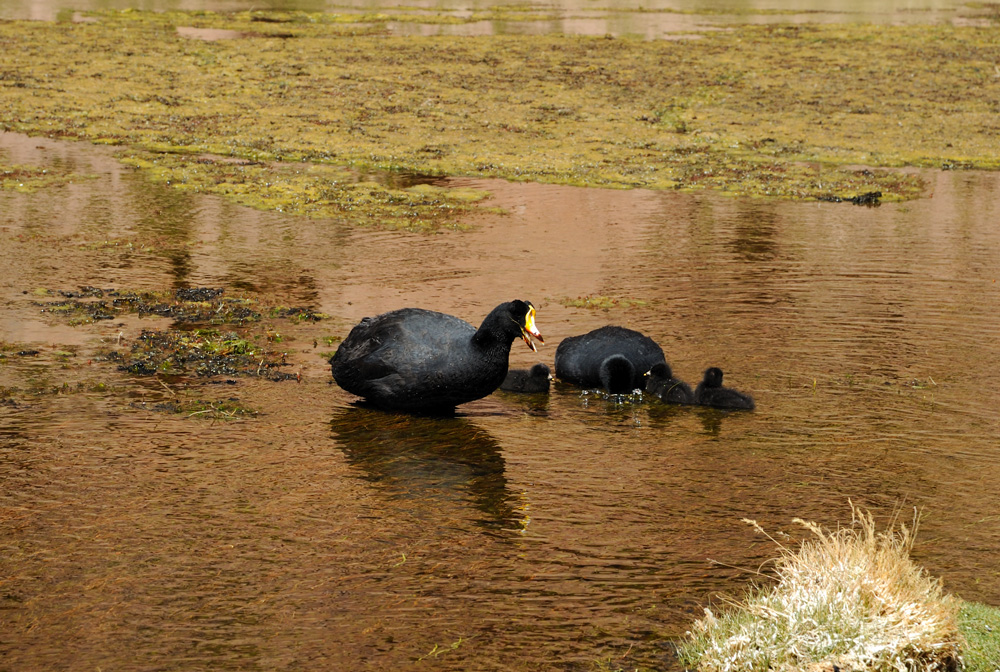
Toes!
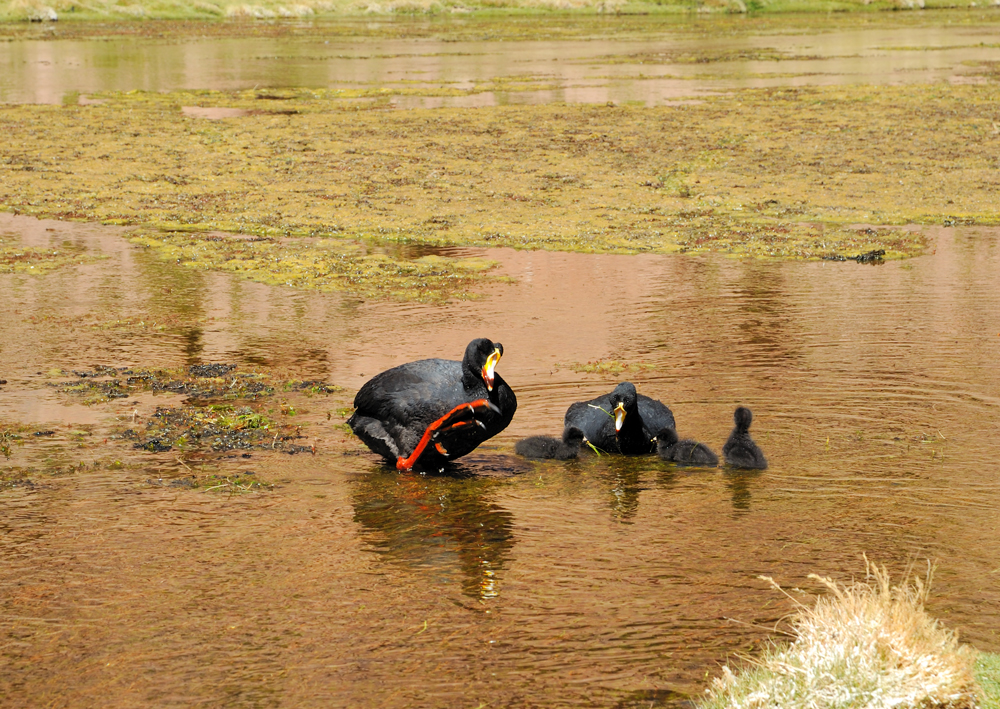
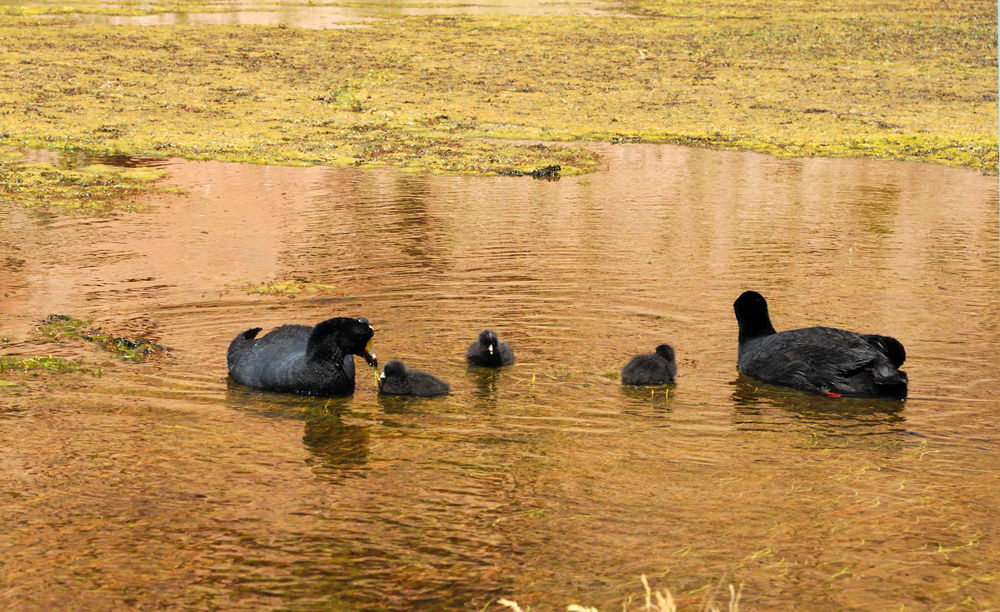
In contrast to other coots, chicks of horned coots are nor bald.
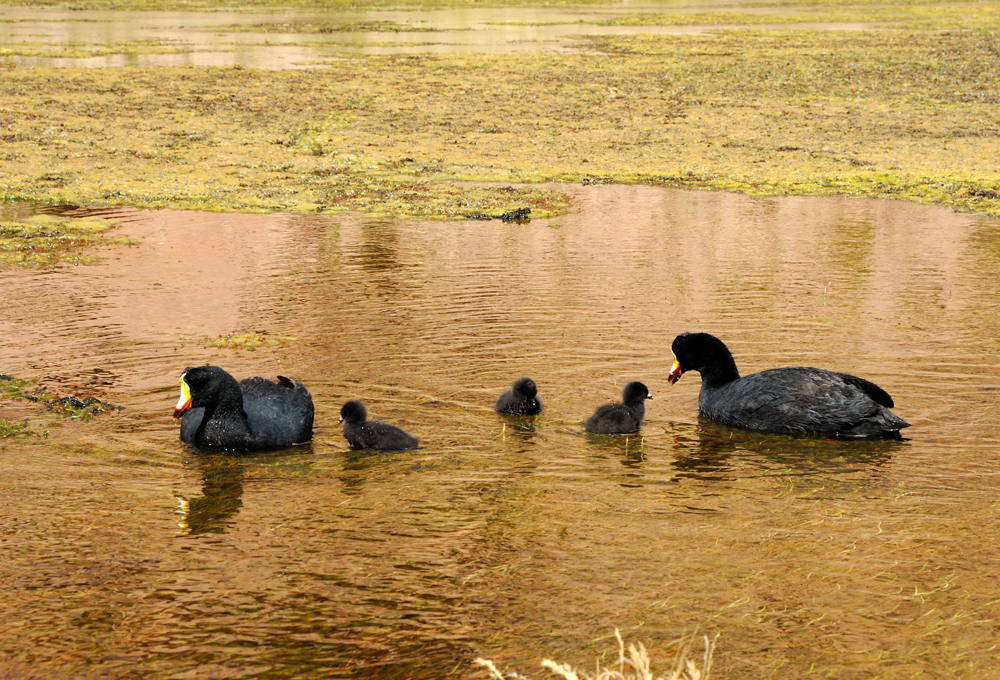
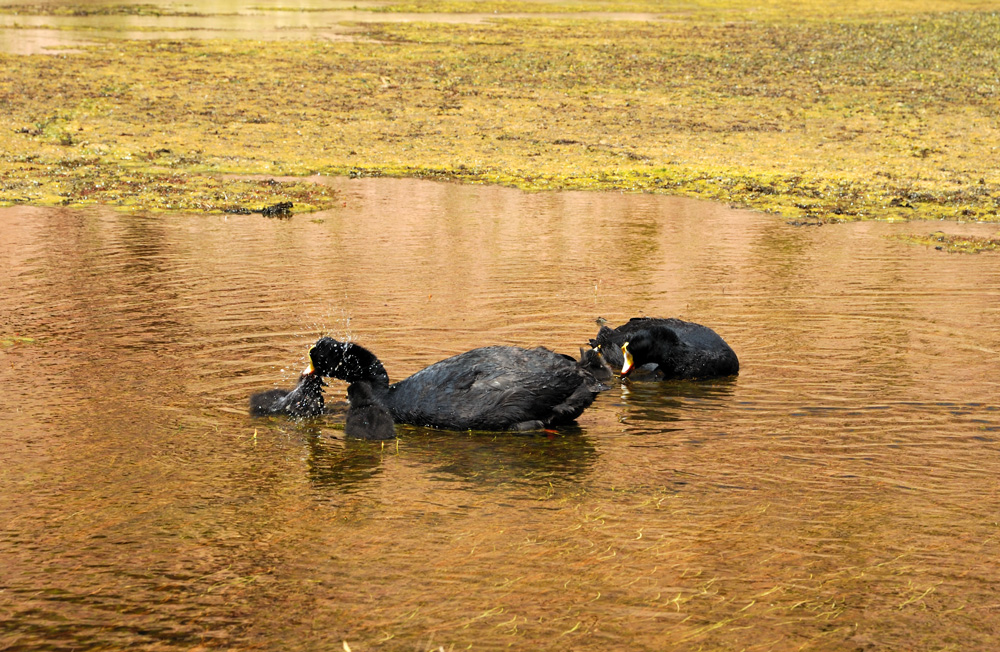
And one word about convergent evolution. Checking which birds from Rallidae family I have in my blog, I found the post about jacana. How they similar to coots by habitus! However, they are not relatives at all. It is just a work of similar habitat.
To be continued…